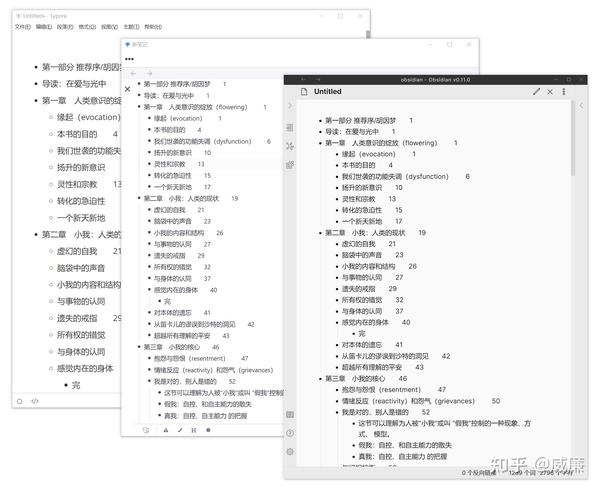
#Typora vs obsidian software
Though I prefer open-source software to proprietary tools, I can live with them so long as the underlying data is in an open format. God knows it provided me more than $15 worth of utility in the years I used it and, if there were no viable alternative, I would have paid for it happily. This alone would not be enough for me to abandon it or even alter my review. Recently, Typora left beta and started charging for the application itself. I thought I had found my ideal setup-I even drafted a post on it-until last month. It has all of the benefits of a WYSIWYG editor combined with all the advantages of the Markdown ecosystem such as Pandoc for format conversion and Git for version control. Obviously an option to disable this might be necessary for extremely complex folders.For the last several years, I used Typora for my academic writing flow.

On launch, the program would make a quick check of the folder, adding and removing files as needed. Though this would require a bit of finagling to achieve the visual effect, the custom order could be stored in the. And a lot of barebones markdown editors don’t have any sorting at all) has some sort of customizable order, be it drag and drop or set parameters. I think Evernote didn’t do this for a while. Pretty much every similar application (Well… I say every, but obviously there are exceptions. A single click is far more efficient than locating the folder with the same name, however it is sorted, and expanding that. This would require only a minimal change to the interface, but would make visual connections–an important part of Obsidian for most–a good bit easier. Obsidian could display pages and folders with the same name as a single object. I did propose a solution for this, one that I think would do well as a plugin or third-party extension at a later date. They are files, not the “objects” or “nodes” of Onenote or Cherrytree, respectively. The disadvantage is that markdown files cannot have subpages. I personally store it on Onedrive, then reference it from multiple machines and edit it with Typora. The enormous advantage to this is that there is total flexibility with how you store your data.

I am well aware of how Obsidian stores data- markdown files in a set of folders. While not really related to WYSIWYG, it is a nice quality-of-life feature. Maybe this would be only temporary, stored in RAM, or it could be saved in some sort of index file. When referencing other documents, or while presenting something, it is a real hassle to find your exact place again. What I mean is when you click away from a note, then click back, either your scroll or your cursor location is saved. I’m going to include something else here- editing location memory. The way to go is definitely some sort of toggle, assignable via hotkey, to go through whatever modes are eventually implemented.

Some people like raw markdown, some people don’t, some people want something in between. These are the three… not so much flaws, as areas that could be improved- that are currently obstacles. Though I have tried, I still don’t feel that Obsidian is ready to replace Scrivener, Onenote, or Notion for creative work. It is equally well-equipped for scheduling, but I still use Onenote because moving over is a hassle.

Currently, Obsidian fills one of those roles- knowledge management. When it stopped receiving updates was actually when I discovered Obsidian, and Markdown in general. I used to have three major uses for Onenote- knowledge management, Scheduling, and creative work.


 0 kommentar(er)
0 kommentar(er)
